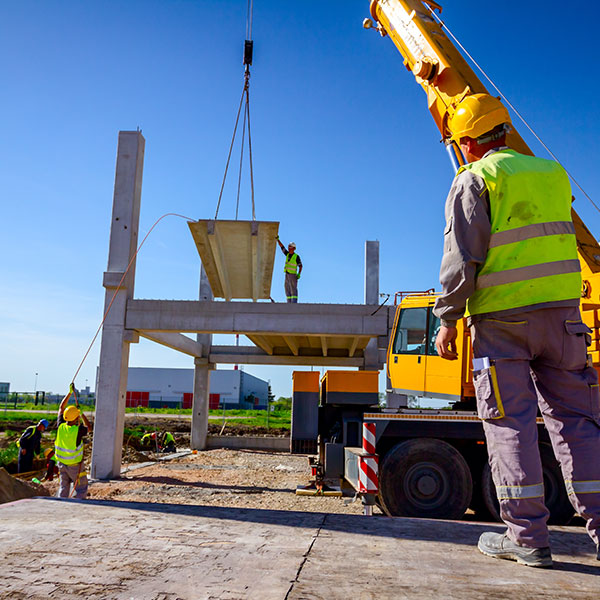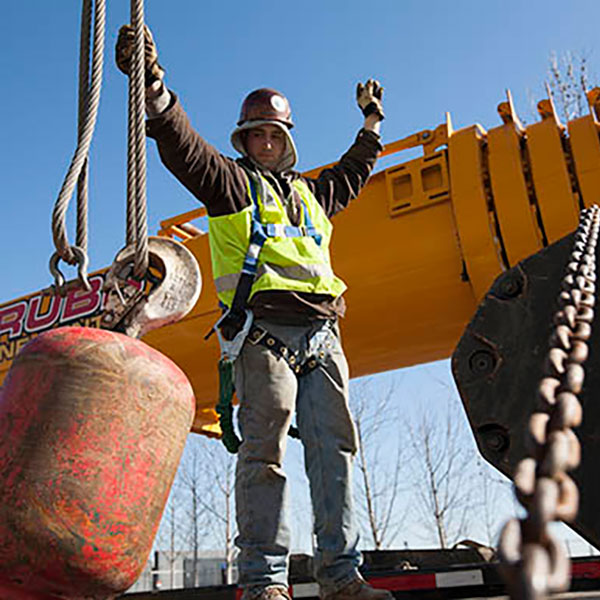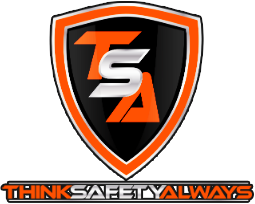Specifically, OSHA CFR 1926.1428(c) requires that signalpersons know and understand basic hand signals; be competent in the application of the type of signals used (e.g., hand, radio); have a basic understanding of the crane’s operation and limitations; and understand when it is appropriate to use hand, radio, or special signals. Most importantly, they must demonstrate qualification through an oral or written exam and a thorough practical exam, either by an accredited third-party qualified evaluator, such as Think Safety Always, or the employer’s qualified evaluator.
Qualified Rigging and Signal Person Training
Rigger Signalman Operator Safety Course & Certification
Get Licensed & Certified for Rigging and Signal Person
Crane Safety - Hand Signals Training
What Are The Requirements?
The requirements for Riggers are less concrete. In some circumstances, OSHA requires employers always to use qualified riggers. These include any hoisting activities relating to the assembly and disassembly of the rig. Qualified riggers must also be used whenever there will be other workers inside the fall zone (the area directly under a load or the expanded area a load could fall into). Qualified riggers must also be used whenever workers will be guiding a load, hooking and unhooking a load, or connecting a load to a structure while it is still attached to the rig.
According to OSHA, it is the employer’s responsibility to determine whether a person is qualified to be a rigger. Having a degree, certificate, or professional accreditation as a rigger is one way to qualify as a rigger. Formal qualification or certification in rigging is not required, as long as the employer can show the rigger has the knowledge, experience, and training in rigging and can demonstrate the ability to solve rigging problems. Employers are not required to have riggers independently tested or assessed, but certification can certainly assist in documenting that an individual is a qualified rigger.
How are signalpersons and/or riggers prepared?
A quality training program will provide a good combination of technical knowledge and hands-on examples to show an application of the principles and techniques taught. Most quality training offers ample opportunity for hands-on instruction using pre-made scenarios that require the candidates to apply the technical knowledge they learned in the classroom. During training, the hands-on scenarios should be assessed, and proper feedback is given to the candidates to ensure a complete understanding of the concepts and techniques learned. The training usually includes a pre-certification written exam so the candidate and the trainer can assess comprehension. In this way, the training is more than just “teaching to the test.”


Rigging & Signal Person Certification
The process to qualify signalpersons and/or riggers can be done with less preparation than is required for certification. However, because there is no or minimal training required, the qualification process does not provide the means to fully evaluate whether a signalperson and/or rigger truly has the technical knowledge and hands-on skills to competently and safely perform crane signaling or rigging duties.
To pass signalperson and/or rigger certification exams and earn certification, comprehensive training is generally required to gain adequate technical knowledge and hands-on skills. Certification courses typically last from a few days to a few weeks and cover areas such as slings, knots, signaling, load control, and safety issues. As a result, signalpersons and/or riggers who have achieved certification—because of the training and testing processes—will have the ability to perform their jobs tasks more safely and effectively.
About The Course:
English & Spanish Classes Available
Employers must use qualified riggers during hoisting activities for assembly and disassembly work (1926.1404(r)(1). Additionally, qualified riggers are required whenever workers are within the fall zone and hooking, unhooking, guiding a load, or doing the initial connection of a load to a component or structure (1926.1425(c).
A qualified rigger is a rigger who meets the criteria for a qualified person. Employers must determine whether a person is qualified to perform specific rigging tasks. Each qualified rigger may have different credentials or experience.
OSHA SAFETY TRAINING
Qualified Rigging & Signal Person Safety Training
Think Safety Always is dedicated to helping clients achieve a safe workplace. In order to accomplish this goal, a world class occupational safety and health program with onsite training must have total management, leadership, and employee involvement. Safety must be management’s highest priority. Production should never be so urgent that a company cannot take time to perform work safely. No matter where you are located, we bring our training to you, nationwide! We offer both English and Spanish classes.
Please contact us for more assistance:
REQUEST A CONSULTATION
THINK SAFETY ALWAYS
The Best Place for Safety Training
CALL US FOR A FREE CONSULTATION
